On the late winter afternoon of March 1, 2024, I decided to take a long walk starting from Cascadilla Park Road, making my way up through the Cornell University campus, and ending at Fall Creek near the Mundy Wildflower Garden before returning to my starting point. The sun was shining brightly, casting long shadows, and the crisp air was filled with a hint of spring. Carrying an Apple IPhone 14 Pro Max smartphone, I set off to capture the beauty and essence of this serene day.
Starting Point: Cascadilla Park Road
The walk began on Cascadilla Park Road, where I was greeted by a delightful patch of snowdrops (Galanthus nivalis) nestled among the glossy green leaves of periwinkle (Vinca minor). These delicate white flowers, blooming despite the chill, were a hopeful sign of the approaching spring. Their pristine petals contrasted beautifully with the dark, shiny leaves, creating a picturesque start to my journey.
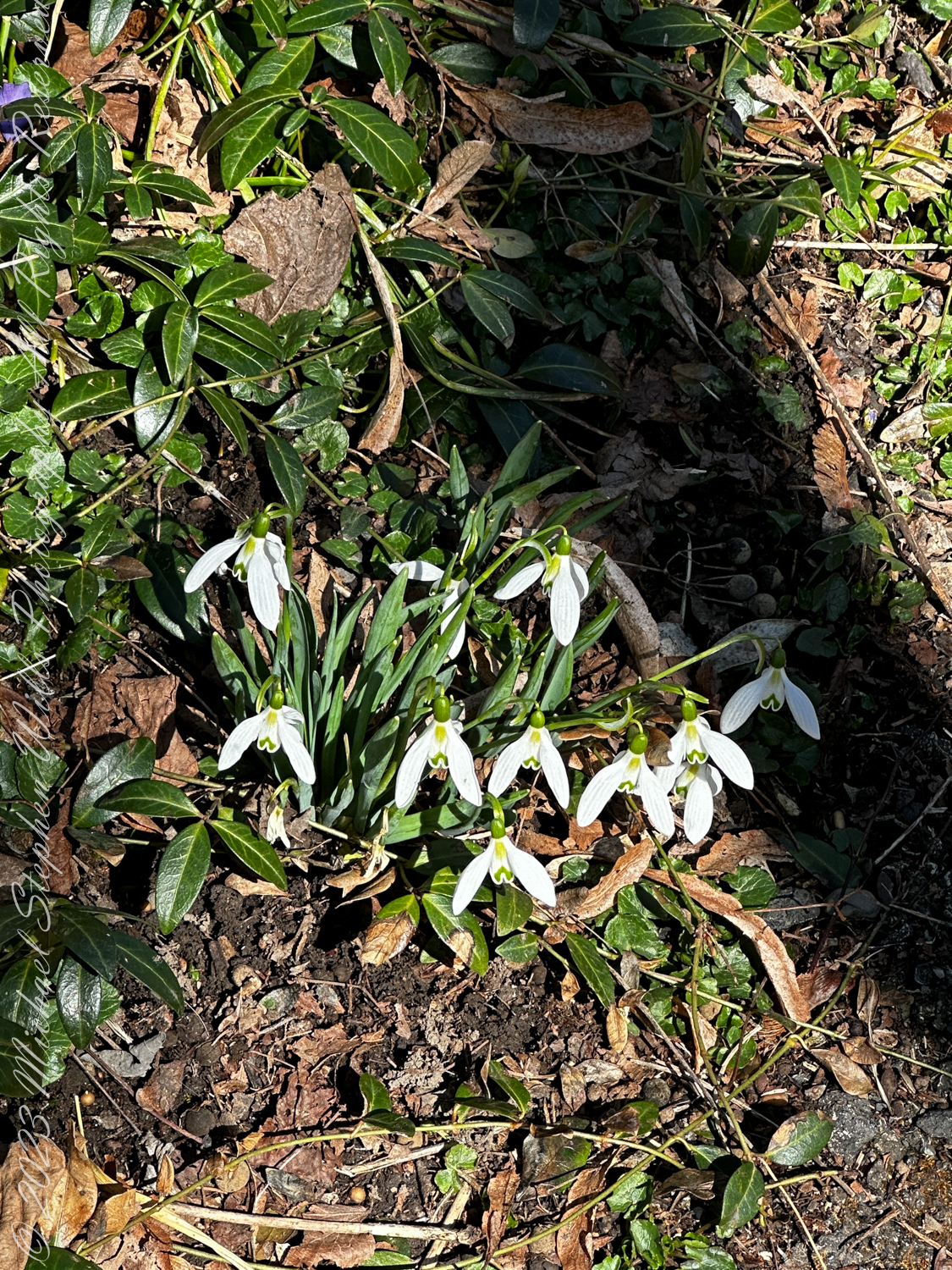
Climbing the Steps to Steps to Myron Taylor Hall
My path led me up flights of granite steps toward Myron Taylor Hall. As I climbed, I could feel the history and tradition of Cornell University enveloping me. The McGraw Tower bells chimed softly, adding a melodic backdrop to my ascent.

Discovering “Magna Dancer”
Reaching the top of the steps, I encountered, at the entrance to Hughes Hall museum, the striking “Magna Dancer” sculpture by Arline Peartree. Its bold red forms stood out vividly against the backdrop of the historic stone buildings. The plaque at the base provided a glimpse into its significance, commemorating the contributions of Cornell alumni. The sculpture’s dynamic lines and vibrant color injected a sense of modernity into the historic setting.
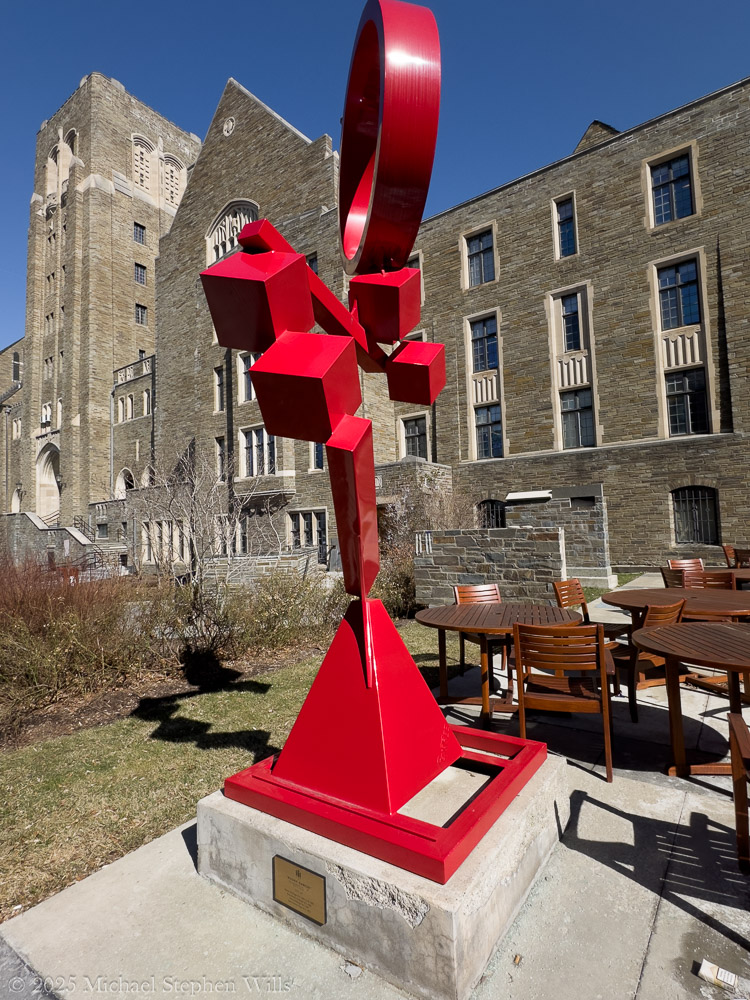
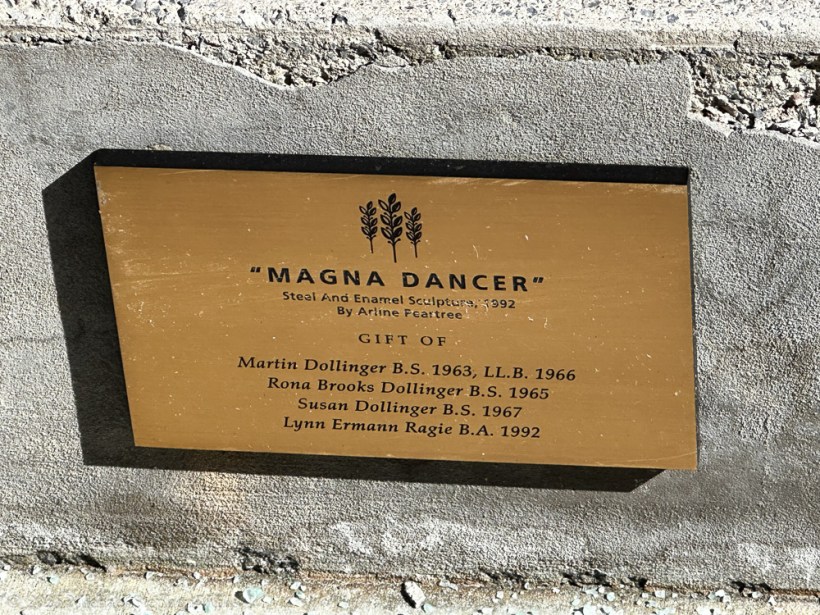
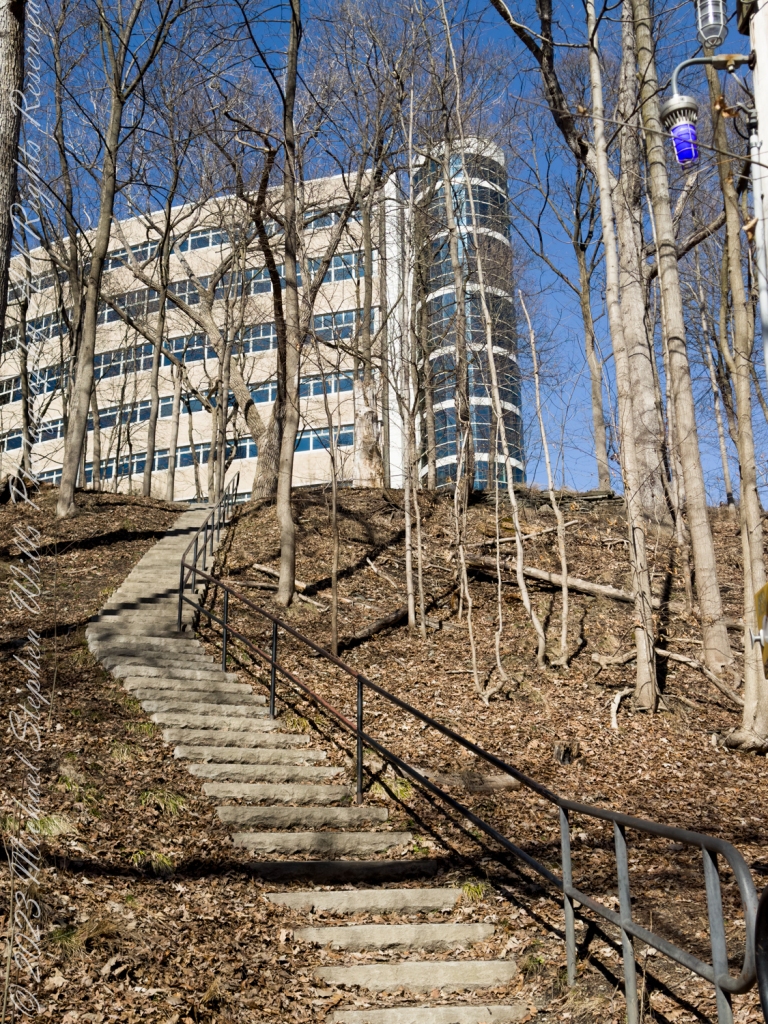
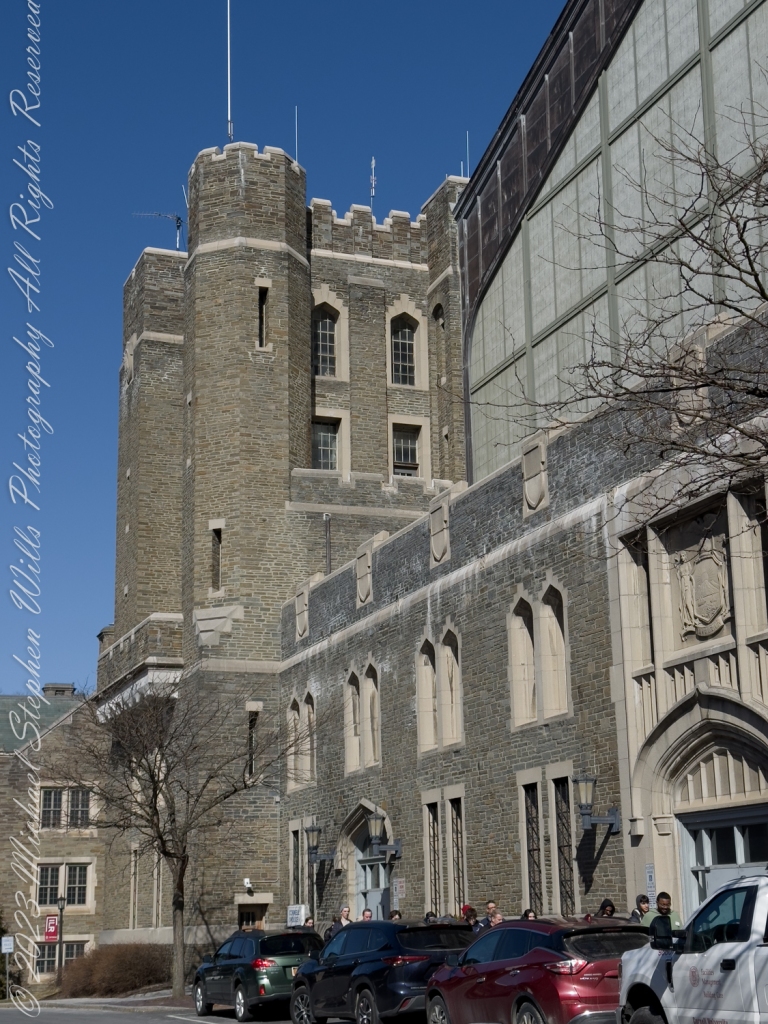
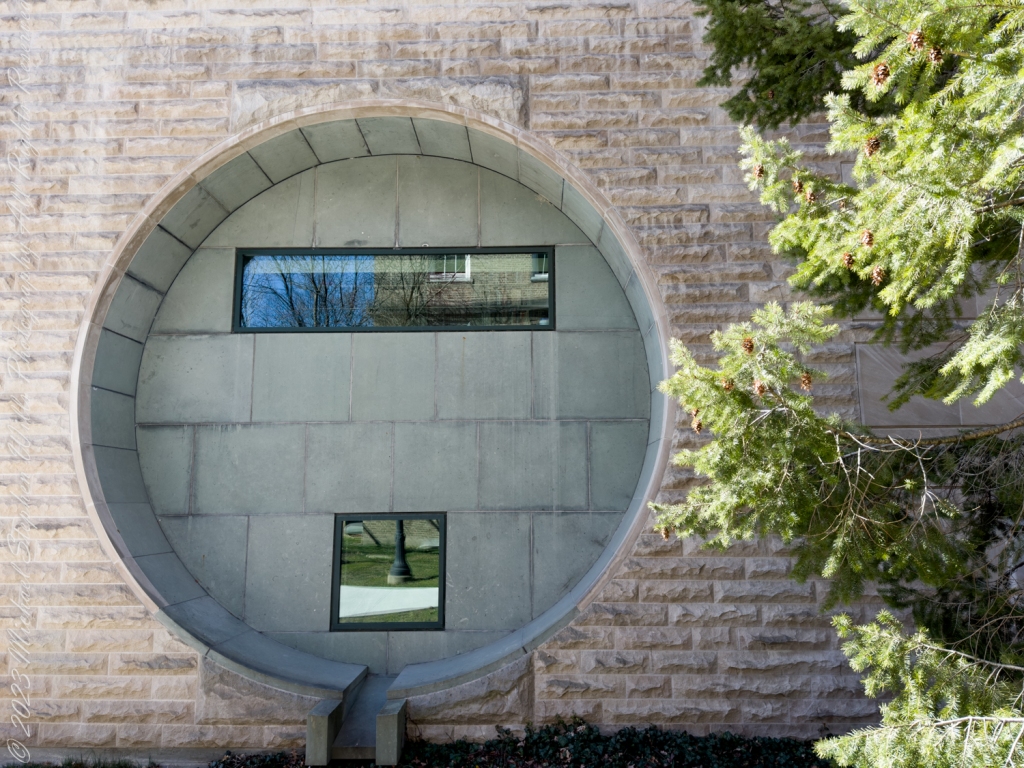
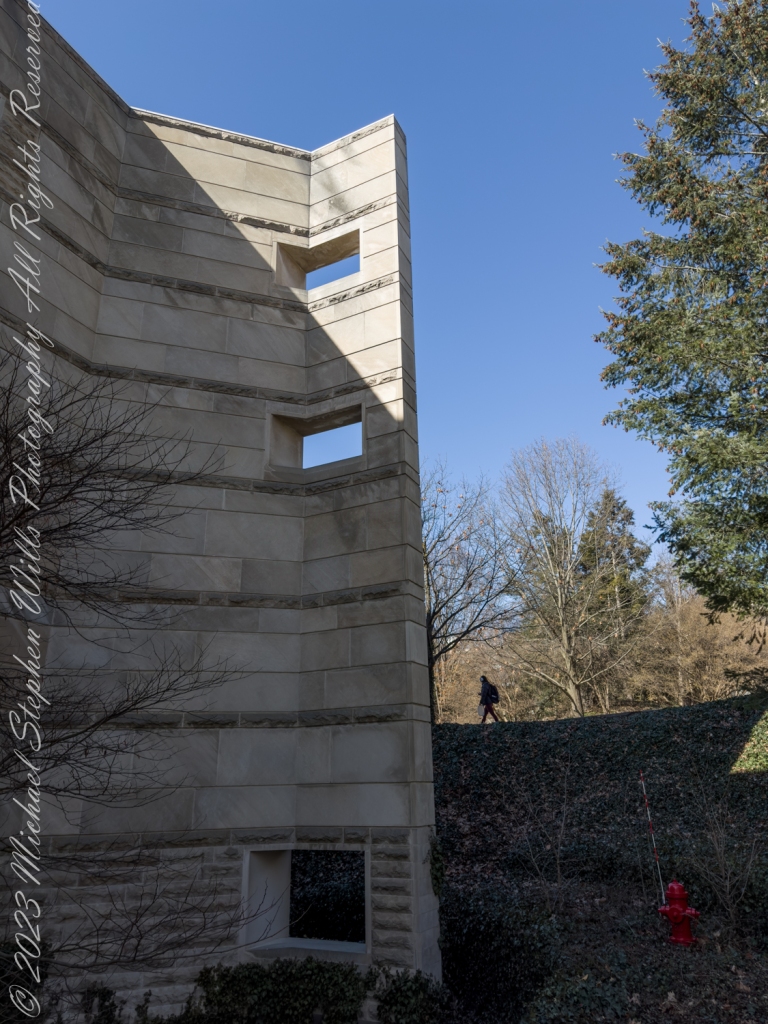
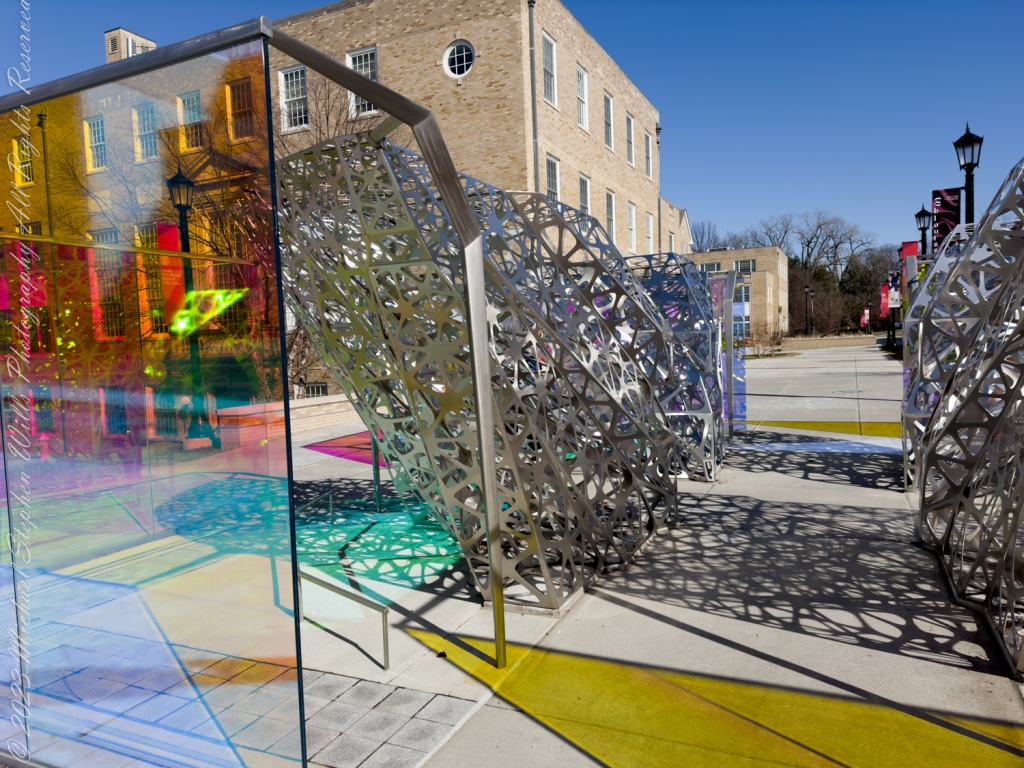
Winter Buds and the Robinson Herb Garden
Here, I passed through the Robinson Herb Garden, where the late winter buds of a Cornelian Cherry Dogwood (Cornus mas) were beginning to unfurl. These bright yellow clusters heralded the arrival of spring, standing out against the bare branches and muted tones of the garden. It was a reminder of the cyclical nature of life and the resilience of the natural world.
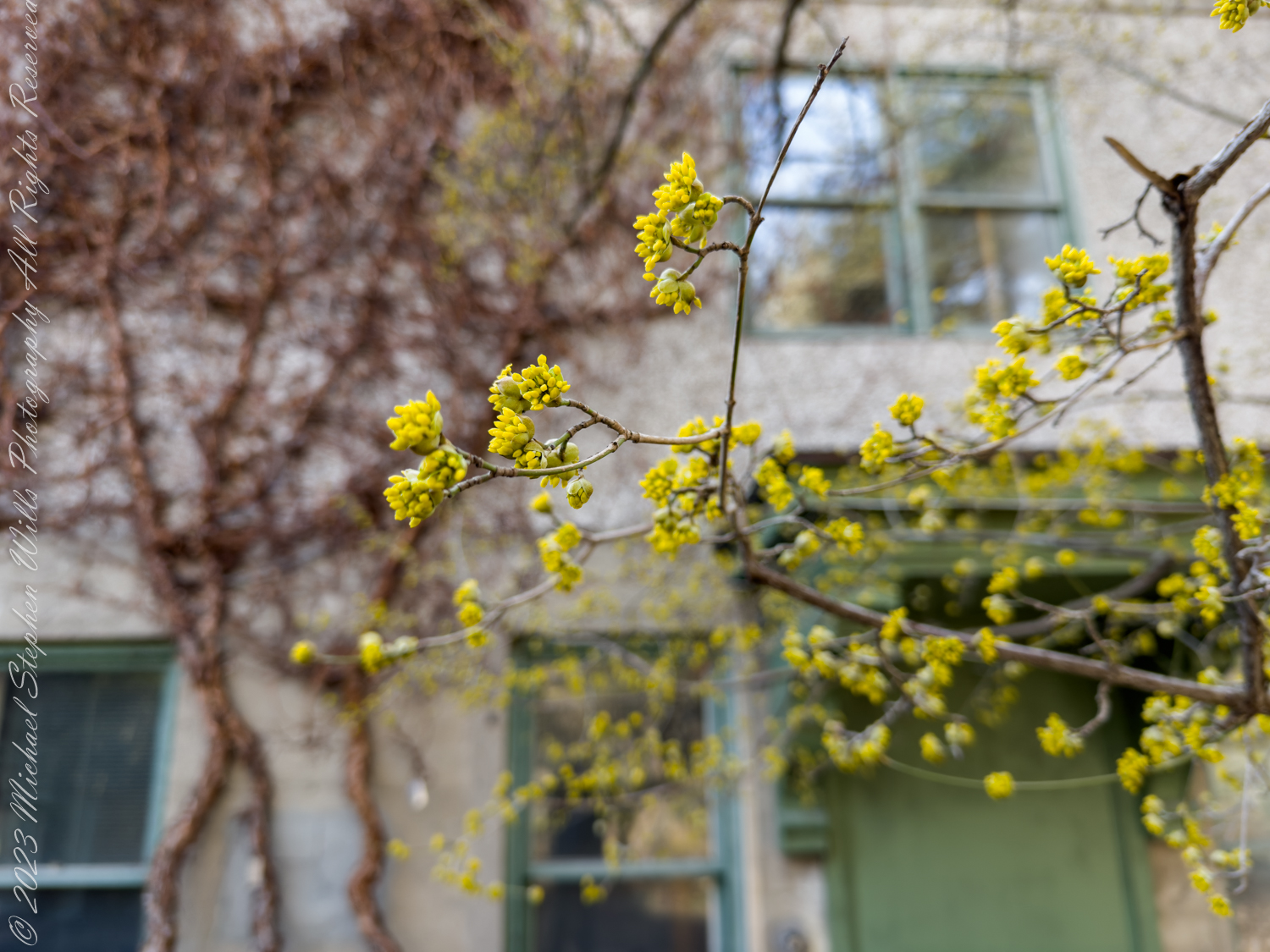
Mundy Wildflower Garden and Fall Creek
At Mundy Wildflower Garden, a hidden gem nestled beside Fall Creek, the landscape transformed into a tranquil haven, with the gentle sound of water flowing nearby. Though it was still early in the season, the promise of blooming wildflowers lingered in the air. The garden’s carefully maintained paths and rustic benches invited quiet contemplation.
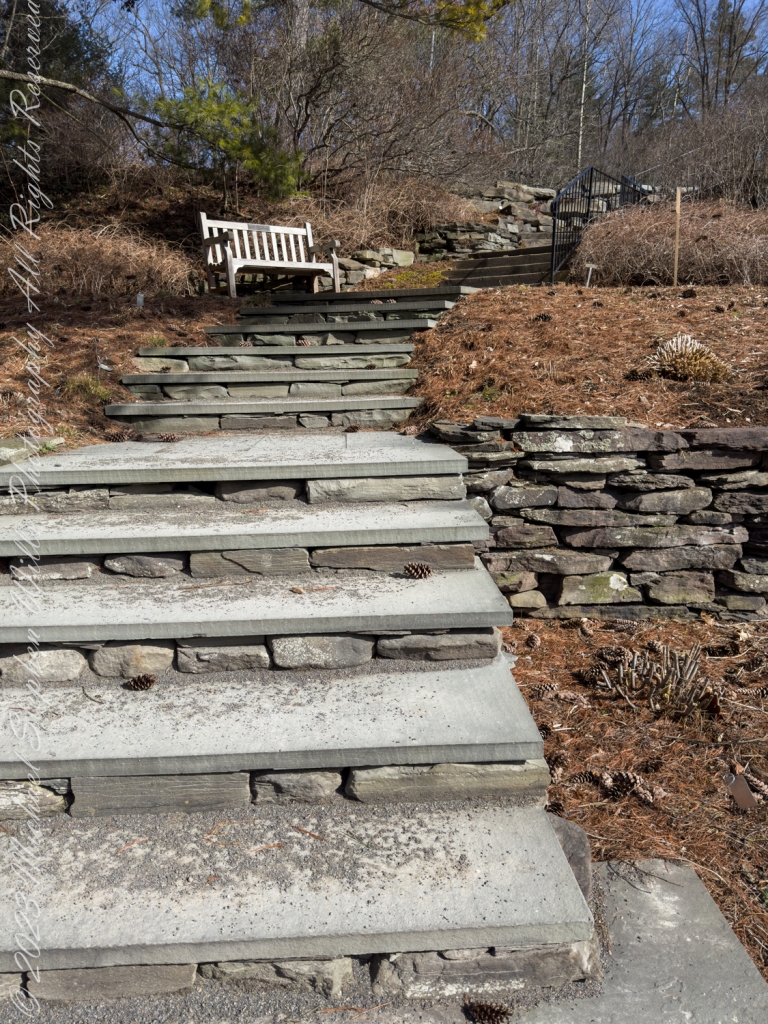
Exploring the Common Ferns Display
As I ventured further, I came across a display showcasing common ferns. The display included photographs and names of various ferns, such as the Christmas Fern (Polystichum acrostichoides) and Goldie’s Fern (Dryopteris goldiana). This educational exhibit was both informative and visually appealing, highlighting the diverse flora found on the campus.
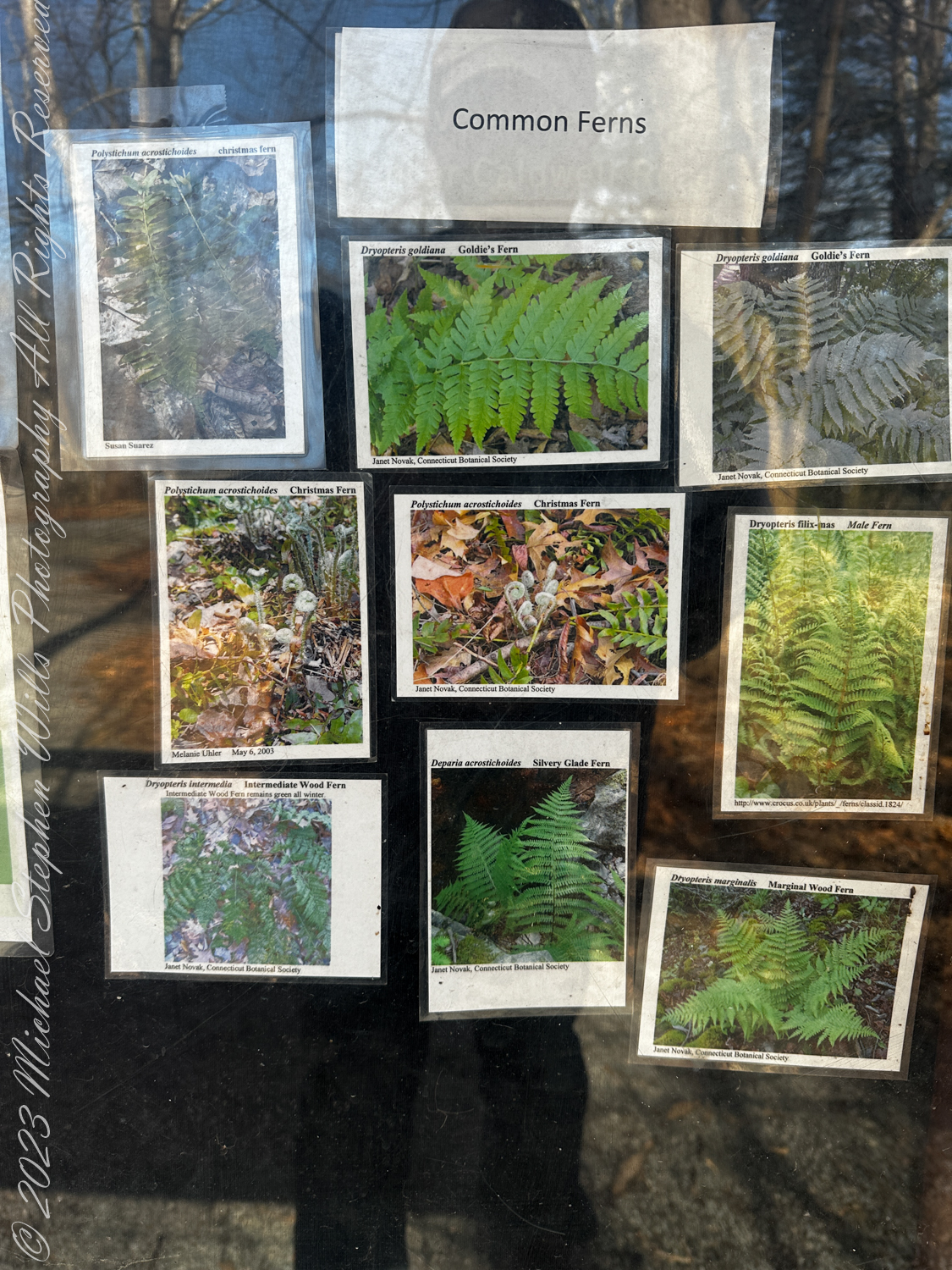
Observing the Weather Station
Nearby, a weather station stood tall, equipped with various sensors to monitor climate conditions. A sign explained its purpose: to help understand how climate change is affecting plants in the area. The data collected here would provide valuable insights into the phenological changes occurring within the garden.
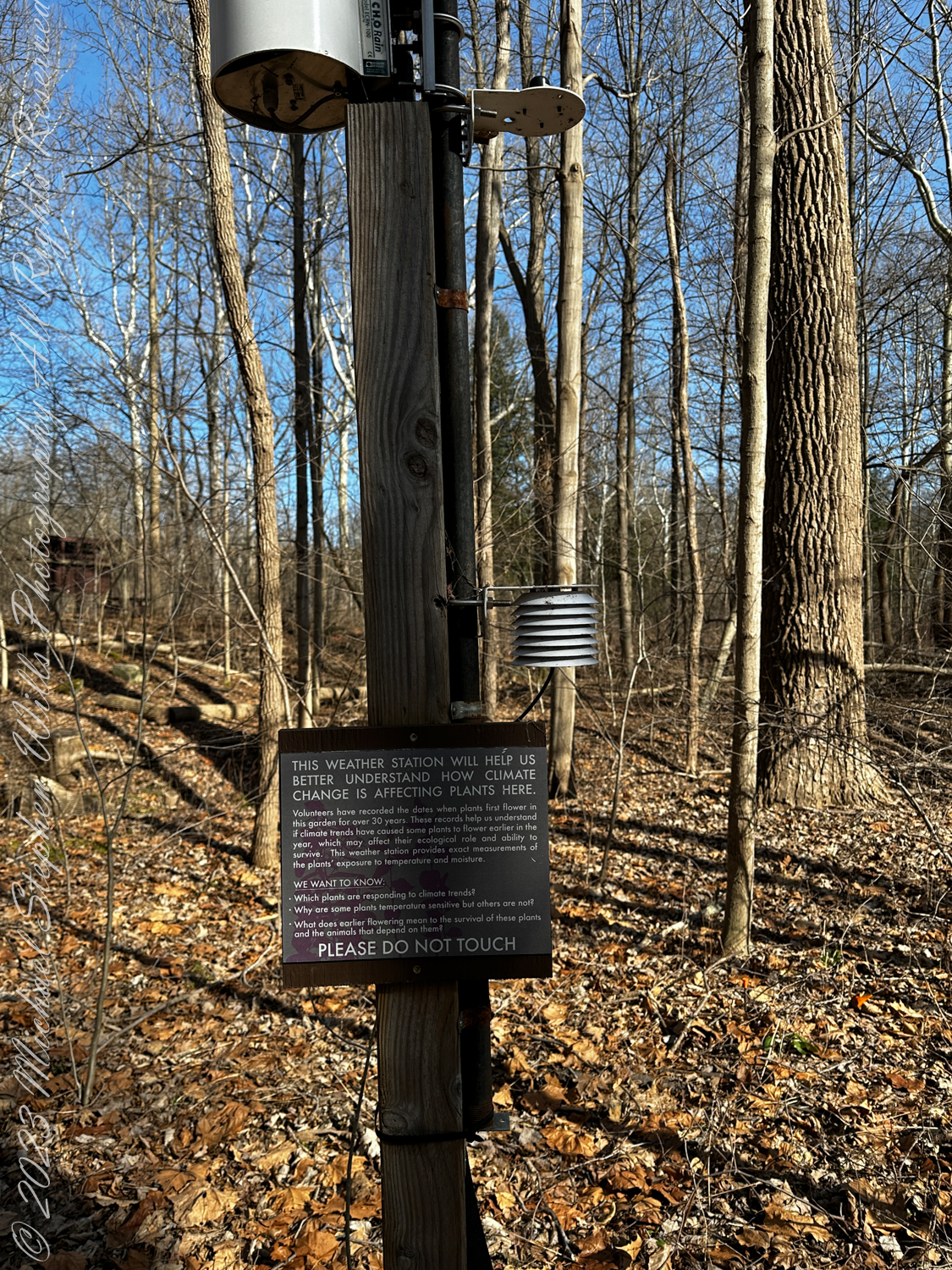
Traversing the Slope to Olin Library
Returning, I made my way toward Olin Library. The path took me along a steep incline, “Lib Hill,” where I could see the stark branches of deciduous trees reaching toward the sky. The steps seemed to stretch endlessly upward, mirroring the journey of knowledge that students undertake within the library’s walls. The modern architecture of the library contrasted sharply with the surrounding natural landscape, symbolizing the intersection of nature and human achievement.
Approaching McGraw Tower
As I neared the heart of the campus, the McGraw Tower stood tall and prominent, albeit encased in scaffolding for restoration work. The historic building, with its distinctive clock face, was an emblem of Cornell’s rich heritage. Despite the scaffolding, the tower retained its majestic presence, a testament to the ongoing efforts to preserve its legacy.
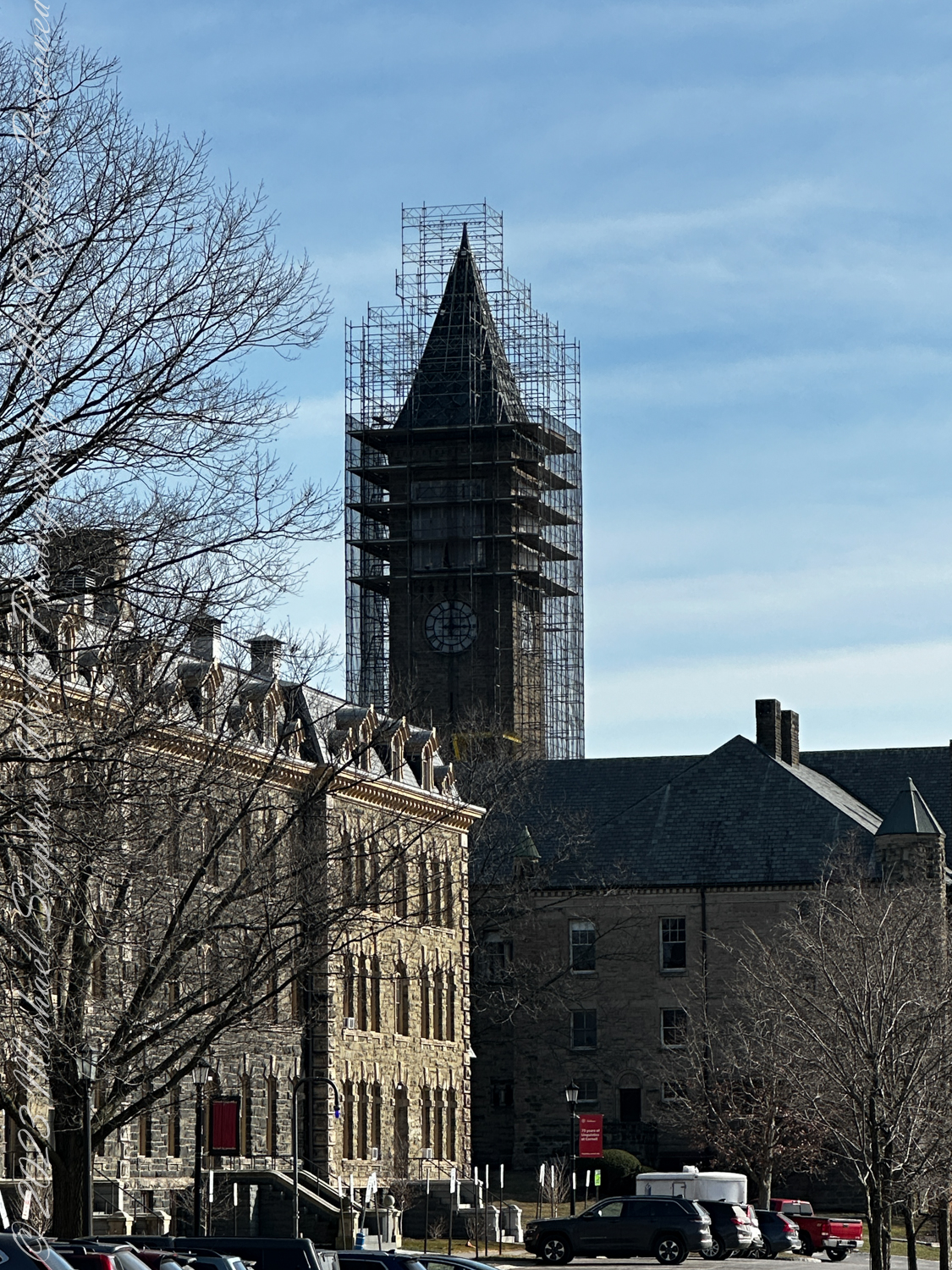
Returning to Cascadilla Park Road
As descended the hill, following Cascadilla Creek, reflecting on the six mile journey, I felt a profound connection to the enduring beauty and resilience of both nature and human creativity. The walk had taken me through time and space, from historic landmarks to natural wonders, each step revealing a new facet of the Cornell University campus.
Reflecting on History
My walk took me past a plaque commemorating the site of the first settlers’ log cabin in Tompkins County, built in 1788. The plaque, erected by the Cayuga Chapter D.A.R. in 1927, was a poignant reminder of the area’s deep-rooted history and the pioneering spirit that shaped it.
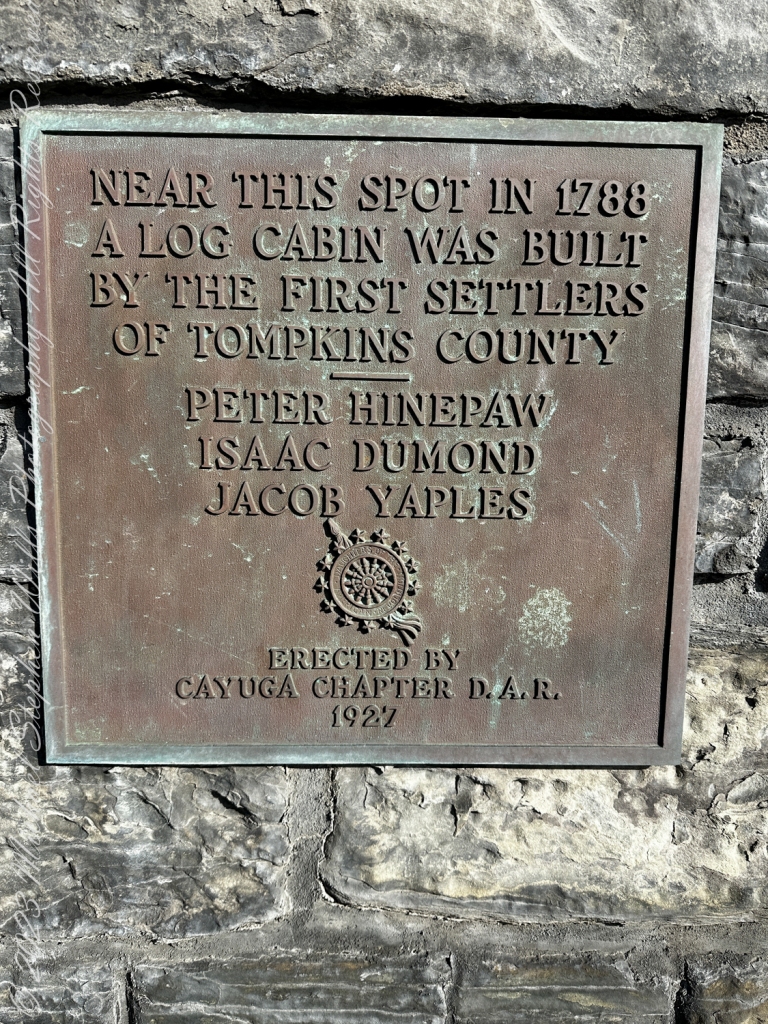
This late winter walk, captured through my lens, was a celebration of the quiet splendor of the season and the enduring spirit of a place that thrives on discovery and growth.
Delightful stroll
LikeLiked by 1 person
Thank You, Sheree
We have so much to be thankful for.
LikeLiked by 1 person
Absolutely
LikeLiked by 1 person
My uncle was an alumnus of Cornell University and went on to become a biology professor. (My novel, War Sonnets, is based on the poetry he wrote about WWII). I can imagine him wandering the campus and surrounding woods with you, probably with a pair of binoculars as he was an avid birder.
LikeLiked by 1 person
Hi Susannah,
What a fascinating connection! It’s wonderful to hear about your uncle’s journey from Cornell to becoming a biology professor, and how his experiences inspired your novel, “War Sonnets.” I can imagine him exploring the campus and woods with great curiosity and enthusiasm I enjoy. The campus, with its rich natural beauty, would have been a perfect setting for his birdwatching adventures. Thank you for sharing this personal insight.
Best regards,
Michael
LikeLike
A beautiful and interesting course.
LikeLiked by 1 person
The campus is our favorite walk when the gorges close for the winter. Cheers!!
LikeLiked by 1 person
One of my friend’s is doing his PhD at Cornell. What a lovely campus! Maggie
LikeLiked by 1 person
Hi Maggie,
Cornell is indeed a beautiful campus! How exciting that your friend is pursuing their PhD there. It must be a wonderful place to study and find inspiration. Thank you for sharing this connection!
Best regards,
Michael
LikeLiked by 1 person
Wonderful place and photos, love the stairs with the bench.
Thank’s for share Michael. Have an amazing time full of blessings.
LikeLiked by 1 person
Hi Elvira,
Thank you for your kind words! I’m glad you enjoyed the photos and the charm of the stairs with the bench. It’s a peaceful spot that holds a special appeal. Wishing you an amazing time full of blessings as well!
Best regards,
Michael
LikeLiked by 1 person
Hi Michael,
Always a pleasure visit your blog.
Agree with you that is a lovely spot with that bench. Same for you amazing time full of blessings.
Best wishes,
Elvira
LikeLiked by 1 person
Hi, Mike. I’ve gotten so behind in my Reader, so I just came to your site proper because I didn’t want to miss any of your posts.
Anyway, what a beautiful campus Cornell University has! The stairs and bench were so appealing. I could see myself there, just taking it all in.
Thank you for sharing your experience. 🌺
LikeLiked by 1 person
Hi Kymber, thanks for visiting!
The day at Cornell was magical, with the winter light casting a serene glow on everything.
I’m glad you could picture yourself there enjoying the beauty too. 🌺
LikeLiked by 1 person
Michael, I enjoyed tagging along with you on this late winter walk. Your photos and narrative capture the balance between nature’s treasures and the manmade presence.
LikeLiked by 1 person
Thank you, Bigskybuckeye!
I’m delighted you enjoyed the stroll through Cornell’s campus.
It’s always a pleasure to share the harmonious blend of nature and architecture that makes it so special.
Your thoughtful words inspire me to keep exploring and capturing these moments.
Happy trails!
LikeLiked by 1 person